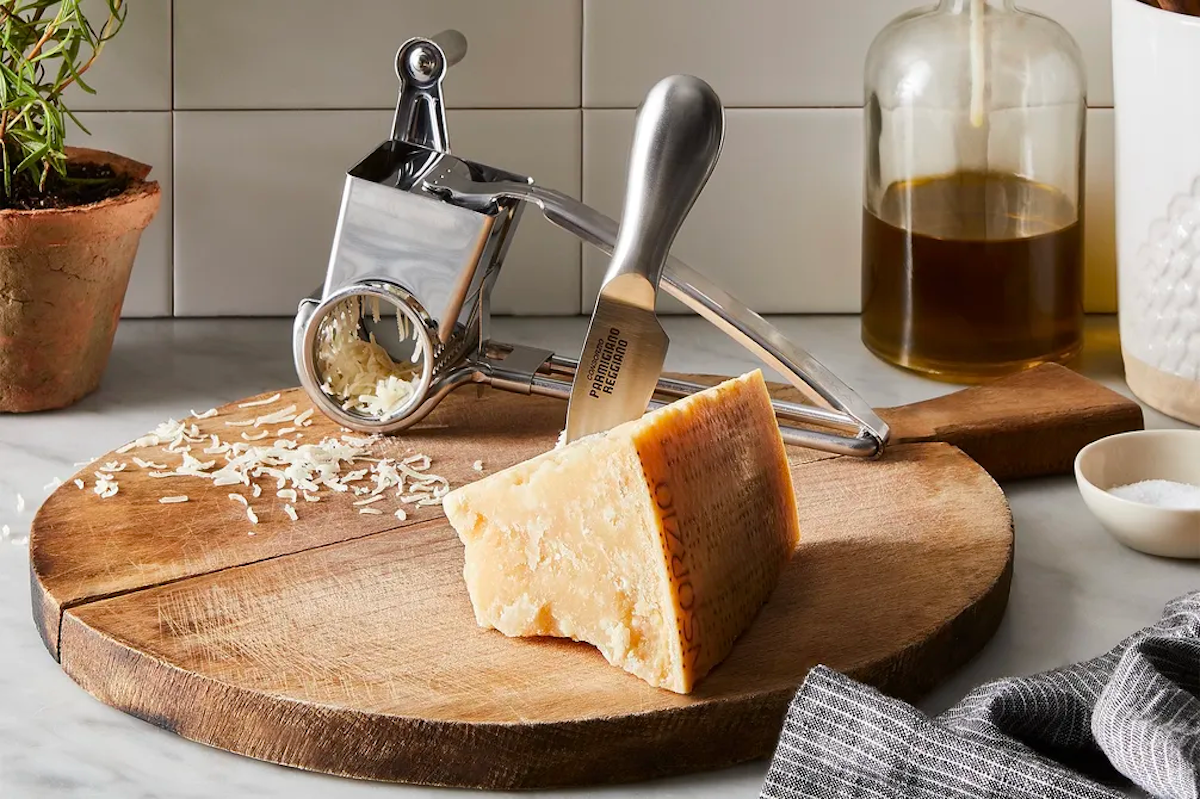Ever grate a hunk of Parmigiano-Reggiano, Grana Padano, or pecorino Romano, and are left with a hefty cheese rind? Before you toss it, use it to enhance another recipe. The texture of a cheese rind is too hard to eat on its own, but it makes for a great flavoring in soups and pasta sauces. Upcycling rinds is a great way to create something new with excess food waste, leading to a more sustainable way to cook with cheese. Before cooking with cheese rinds, be sure to clean them. To do this, rinse the rinds in water and pat dry with a cloth. Next, remove any excess wax on the exterior with a cheese planer or knife. Now, it's time to put this technique to use — here are our favorite ways to reuse cheese rinds.
Storing cheese rinds
First things first: If you're not ready to use your cheese rinds right away, seal them in an airtight plastic bag and store in the freezer until a recipe calls for one. Surprisingly enough, they'll last indefinitely. Cheese rinds are the only type of cheese you should store in the freezer. Never freeze cheese that you intend to eat at room temperature — the cold temperatures will affect the flavor and texture.
How to use them
Soup
One of the most popular methods for using cheese rinds is soup. If a soup tasted better with grated cheese on top, there's a good chance that the cheese rinds will enhance the flavor of the crock! This Parmesan Broth is a perfect example. The broth calls for 1 cup of Parmigiano-Reggiano cheese rinds, sautéed with herbs and vegetables and simmered in water. The cheese rinds soften the flavor and liquid, adding subtle nutty and slightly fruity notes. From here, you can customize the soup however you want!
This Minestrone Soup is a cozy winter staple that calls for a 2" rind of Parmigiano-Reggiano. Here, it's simmered with vegetables including tomatoes and green beens, two varieties of legumes, fresh herbs like rosemary and thyme, and water to create a zesty and flavorful soup. The rind is removed just before serving but grate even more cheese on top because why not?
Pasta
Rinds are sometimes added to homemade pasta sauce, such as a classic marinara. Add a few rinds of Parmigiano-Reggiano or Grana Padano and simmer with the tomatoes, mirepoix, and basil. This adds a slightly salty flavor to the sauce while thickening the consistency. Remember to remove the rind before serving.
Risotto
Unless it's totally dairy-free, Parmesan cheese is usually folded into silky risotto just before serving. But don't wait until the end to add it — use cheese rinds in risotto, too. Normally you'd heat up stock or water before stirring it into the rice, right? While the liquid heats up, add the rind, along with thyme, bay leaves, rosemary, and bring to a light simmer for a more flavorful base. The rice will be enhanced by the cheesy notes in the broth and the result is a deliciously creamy, nutty dish.
Olive oil
If you're a fan of infused olive oil, you'll love this trick! Take a pecorino Romano cheese rind and add it to a jar of extra-virgin olive oil. Let this mixture sit for a few days so the flavor of the cheese infuses the oil. You can also add other herbs and aromatics such as thyme, rosemary, and garlic for an extra kick. Serve alongside crusty bread as the perfect aperitivo snack!




Shares